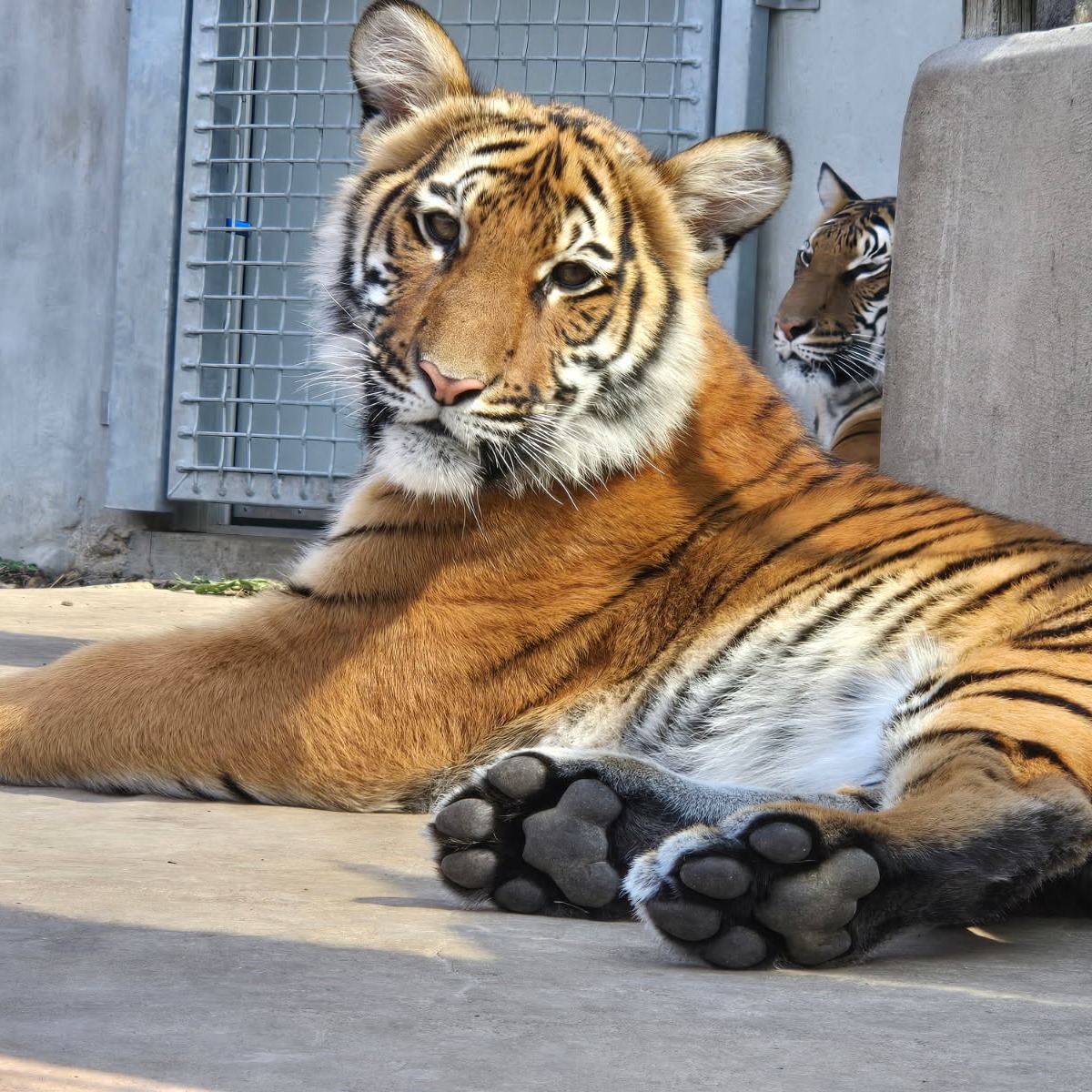- Observing the growth stages of tiger cubs and the significance of their early development.
- The role of zoos in fostering a conducive environment for tiger cub rearing and conservation.
- Insights into the behaviors and milestones of tiger cubs, with a focus on Saba and Ayaz.
- The importance of wildlife conservation efforts and strategies to protect tigers in the wild.
- Endearing aspects of tiger cub interactions, reinforcing public interest and support for conservation.
From the moment tiger cubs are born, their journey is marked by a series of significant developmental stages that shape their survival and adaptation skills. For cubs like Saba and Ayaz, this journey is a profound transformation from their initial vulnerability as blind and helpless infants to the robust, agile creatures they become. During the initial weeks of life, tiger cubs are entirely dependent on their mothers. They are born with their eyes closed and are unable to regulate their body temperature. Thus, they rely heavily on their mothers for warmth and nutrition. Within the first few weeks, however, their senses start to develop, beginning with their eyesight. As their vision sharpens, they become more curious and start to explore their immediate surroundings, gaining muscle strength and coordination.
The transition from milk to solid food occurs around the age of two months, marking a pivotal milestone in their growth. This introduction to meat requires both physical readiness and the development of carnivorous instincts. Playful behavior becomes more pronounced, serving as a critical component of their growth. Through play, cubs practice hunting techniques, coordination, and social skills necessary for survival in the wild. Observing these behaviors in Saba and Ayaz offers invaluable insights into the natural instincts innate to these majestic creatures.
Zoos play a pivotal role in providing a safe and nurturing environment for tiger cubs. Institutions like these are not merely showcases for public amusement. They are critical hubs for conservation, education, and species preservation. The efforts undertaken by zookeepers and wildlife veterinarians are essential in simulating the natural habitats and behaviors that these cubs would experience in the wild. In the case of Saba and Ayaz, their home provides enrichment activities that stimulate mental and physical growth, preparing them for a life that mirrors natural tiger instincts as closely as possible.
A key aspect of zoo management is the emphasis on animal welfare and behavioral enrichment. For tiger cubs, this means ensuring they have a habitat that engages their natural curiosity and need for various physical activities. Structures that allow climbing, objects that encourage stalking, and water features for swimming are just a few elements incorporated into their enclosure. Feeding strategies are also designed to mimic hunting, encouraging the cubs to "chase" and "capture" their food, thereby honing skills essential to their development.
Understanding the natural behaviors of tiger cubs like Saba and Ayaz allows researchers and zookeepers to track milestones and anticipate needs. Behaviors such as mock-fighting, solitary exploration, and territorial marking are observed in controlled environments, guiding keepers in providing appropriate resources and solutions for evolving needs. Noteworthy is how quickly these cubs grow, both in size and personality. Within months, they undergo substantial transformation, indicating robust growth which must be managed carefully to maintain optimal health.
From a conservation perspective, the births and successful rearing of tiger cubs is a beacon of hope for the species. With tigers facing numerous threats in the wild—primarily habitat destruction and poaching—breeding programs within zoos are critical in maintaining genetic diversity and population stability. Conservation specialists work tirelessly to develop strategies that extend beyond captive breeding. Their work involves reforestation efforts, anti-poaching initiatives, and community education programs aimed at preserving tiger habitats and coexistence between humans and wildlife.
As Saba and Ayaz continue to grow and captivate the hearts of zoo visitors, they also serve as ambassadors for wildlife conservation. Exhibiting their playful behaviors and endearing interactions, these cubs help bridge the gap between the public’s emotional connection and the scientific efforts required to ensure tigers’ survival in the wild. Public engagement not only enhances awareness but also fosters financial and social support critical to wildlife conservation efforts.
The compelling story of these tiger cubs is a reminder of the significant role every individual can play in the preservation of wildlife. By supporting zoos and conservation initiatives, the collective efforts contribute to the sustained survival of these magnificent animals. Through education and engagement, future generations will continue to appreciate, protect, and celebrate the extraordinary beings that share our planet. As Saba and Ayaz chart their path toward adulthood, their stripes symbolize hope and the enduring struggle for conservation worldwide.
*****
Source Description
Time flies when you’re growing stripes!
Our tiger cubs, Saba and Ayaz, aren’t so little anymore! From tiny paws and baby roars to bold strides and playful pounces, it’s been incredible watching them grow right before our eyes. 💛
Stop by and see just how big they’ve gotten—you might be surprised!
📸: Keeper Tori


